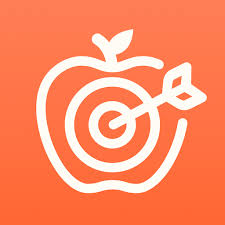Trying to stay on top of your nutrition goals? You’re not alone. With so many food tracking apps out there, it can be hard to know which one actually helps. Two of the most popular options are Lose It and Cronometer. Both offer calorie tracking, barcode scanning, and detailed food logs, but they go about it in slightly different ways. Let’s break down what each app does well so you can figure out which one fits your style and goals better.

Getting to Know the Apps
Lose It: Simplicity and Speed
Lose It is a calorie-counting app made for people who want to lose weight or manage their eating habits without diving too deep into the science. The app is centered around simplicity. It offers features like:
- Easy food logging with a massive searchable database
- Barcode scanning for packaged foods
- Goal setting for weight loss
- Custom foods and recipes
- A bright, friendly interface that keeps things light and encouraging
Lose It also includes a community space, light educational content, and visual charts to help you stay on track. It’s designed to help users stay motivated with minimal friction.

Cronometer: Detail and Accuracy
Cronometer goes beyond basic tracking. It offers a much deeper look into your nutrition and is geared toward people who care about micronutrients, specific diet plans, or health conditions. Key features include:
- Highly accurate food database based on verified sources (USDA, NCCDB)
- Tracking for over 80 nutrients, including vitamins, minerals, and amino acids
- Custom macro and micronutrient goals
- Support for intermittent fasting, supplements, and biometrics
- Compatibility with a wide range of health devices
Cronometer is used by everyday users and health professionals alike. It’s great for people who want more than just calorie tracking – it’s built for nutritional insight.
At a Glance: Strengths and Weaknesses
| Feature | Lose It | Cronometer |
| Ease of Use | Simple and fast logging, beginner-friendly | More data-heavy, takes time to learn |
| Food Database | Massive but user-generated (can be inaccurate) | Smaller but sourced from verified databases |
| Nutrient Tracking | Calories, macros, limited micros | Over 80 nutrients, including micros and amino acids |
| Customization | Basic goal setting, recipe creation | Full control over macro/micro targets, biometrics |
| Barcode Scanning | Quick and reliable | Slightly slower but more detailed |
| Device Integration | Apple Health, Fitbit, Google Fit | Includes those + broader device support |

How They Compare by Feature: Detailed Breakdown
Logging and Speed
- Lose It is designed for quick entry. You can add foods with just a few taps. This makes it easy to use in busy moments like lunchtime at work or during your evening meal prep.
- Cronometer logs take a little longer, but you get a complete nutritional profile for each entry. It’s worth the extra seconds if you care about things like zinc or omega-3 intake.
Food Database Quality
- Lose It relies on user entries, which makes it more flexible but less reliable. You might find your favorite coffee shop muffin, but it could be missing important nutrients or be mislabeled.
- Cronometer uses verified sources like USDA and NCCDB. It doesn’t have as many restaurant items, but the data you do get is trustworthy and detailed.
Depth of Nutrient Tracking
- Lose It focuses on the basics: calories, protein, fat, carbs. It’s great if you don’t want to get overwhelmed by data.
- Cronometer shows you everything from selenium to fiber to lysine. Ideal for people with specific health or performance goals.
Customization Options
- Lose It lets you set calorie goals, adjust weight loss pace, and tweak macros a bit.
- Cronometer allows complete customization of every macro and micro goal. You can also track biometrics like blood pressure or fasting windows.
Recipe and Meal Tracking
- Lose It allows for creating custom recipes and meals. It works well for repeating meals.
- Cronometer does this too, but adds more detail on each nutrient within your custom meals. You can also track serving size variations and recipe scaling.
Free Plans vs Paid Plans: What’s the Difference?
Lose It Free: Includes the basics – calorie tracking, basic macro tracking, and barcode scanning. It’s enough for anyone starting out with food logging or focusing on weight loss.
Lose It Premium: Unlocks personalized meal plans, additional insights into food habits, and custom goal setting options. If you want a deeper look at your patterns or enjoy guided plans, premium may be worth the upgrade.
Cronometer Free: Includes robust features right out of the box: calories, macros, and over 80 micronutrients. It also supports recipe building and biometric tracking, making it a powerful tool for free.
Cronometer Gold: Adds even more tools like advanced nutrition trends, custom charts, food timestamps, and intermittent fasting timers. For detailed tracking and analysis, the Gold plan is excellent for users who want full control and long-term trends.

Real Talk: What You’ll Like and What You Might Not
Lose It: A Friendly Tracker That Keeps Things Simple
Lose It is the go-to app for anyone who wants to track their food without stress. It’s bright, approachable, and does a great job of keeping you motivated. Whether you’re logging meals between meetings or starting a new health habit, it makes tracking feel doable, even fun.
Pros:
- Quick and intuitive logging interface
- Great for beginners and casual users
- Motivational design and friendly visuals
- Solid free version with essential tools
Cons:
- Nutrient data can be inaccurate due to user-generated entries
- Limited micronutrient tracking
- Fewer customization options for dietary goals
- Premium features needed for deeper insights
Cronometer: A Precision Tool for Serious Nutrition Tracking
Cronometer is built for people who want to know exactly what’s in their food. It’s ideal for anyone managing a diet, following a specific eating plan, or just curious about what goes into their meals on a deeper level. If you’re the kind of person who likes seeing the full picture, Cronometer delivers.
Pros:
- Detailed nutrient tracking (80+ nutrients)
- Data pulled from verified, trustworthy sources
- Full customization for both macro and micro goals
- Excellent for specific dietary needs or medical conditions
Cons:
- Slower logging experience
- More complex interface may overwhelm beginners
- Less community engagement and social features
- Some restaurant and branded foods may be missing

A Healthier Approach: ReciMe for Real Food Lovers
Built for Real Food, Not Just Barcodes
While apps like Lose It and Cronometer focus on packaged foods and barcodes, we created ReciMe for people who actually cook at home. If you prefer real ingredients over processed meals, ReciMe fits naturally into your lifestyle.
Nutrition from Recipes, Not Guesswork
With ReciMe, you can import any recipe: from Instagram, TikTok or Pinterest, and get a full nutrition breakdown based on the actual ingredients. That means no more piecing together data from multiple labels or database entries.
More Than Just a Tracker
ReciMe is your all-in-one kitchen assistant. It helps you plan, cook, and shop smarter with tools designed for everyday home cooks:
- One-tap recipe saving from any site or social post
- Instant calories, protein, carbs, and fat calculations
- Smart grocery lists sorted by aisle or recipe
- Weekly meal planner with drag-and-drop ease
Why It Matters
Not all store-bought food is healthy, and most tracking apps aren’t built for fresh, home-cooked meals. ReciMe bridges that gap. It supports real, nutritious eating without making food feel like a math problem.
If you’re someone who values cooking, cares about what goes into your meals, and wants a tool that keeps up with your kitchen life – give ReciMe a try.
Just try it – you’ll love it:


Final Verdict: Choose What Fits Your Life
When it comes to food tracking, there’s no one-size-fits-all answer. What really matters is finding the app that fits into your daily routine, keeps you motivated, and helps you stay consistent over time.
Lose It is the better fit for those who want a fast, easy, and visually appealing way to log food. It’s perfect if your main goal is weight loss or if you’re just starting out and don’t want to be overwhelmed with data.
Cronometer is the stronger choice if you’re someone who likes details, wants accurate nutrition information, or is following a specific diet. It’s more technical, but it also gives you a much deeper view into what you’re eating.
In the end, the best app is the one you’ll actually stick with. If it helps you build better habits and makes tracking part of your day without stress, you’ve found the right fit.
Frequently Asked Questions
Which app is better for beginners?
Lose It tends to be easier for new users. It has a cleaner layout, faster logging, and fewer distractions for someone just starting out with food tracking.
Is Cronometer too complex?
It depends on your needs. If you’re just looking to count calories, it might feel like overkill. But if you’re someone who enjoys numbers, accuracy, and nutritional detail, it’s incredibly useful.
Are the free versions enough?
Both apps offer strong free versions. Lose It gives you everything you need for basic calorie and macro tracking. Cronometer offers deeper insights, even without paying, including micronutrient data that other apps often lock behind a paywall.
How accurate is the data in these apps?
Cronometer pulls its data from verified nutrition databases, making it more accurate overall. Lose It’s food entries come largely from user submissions, so accuracy can vary, especially with less common items.
Can I switch apps later on?
Yes. Many people start with one app and move to another as their goals or preferences change. What matters most is building consistency and awareness with whichever tool you choose.
